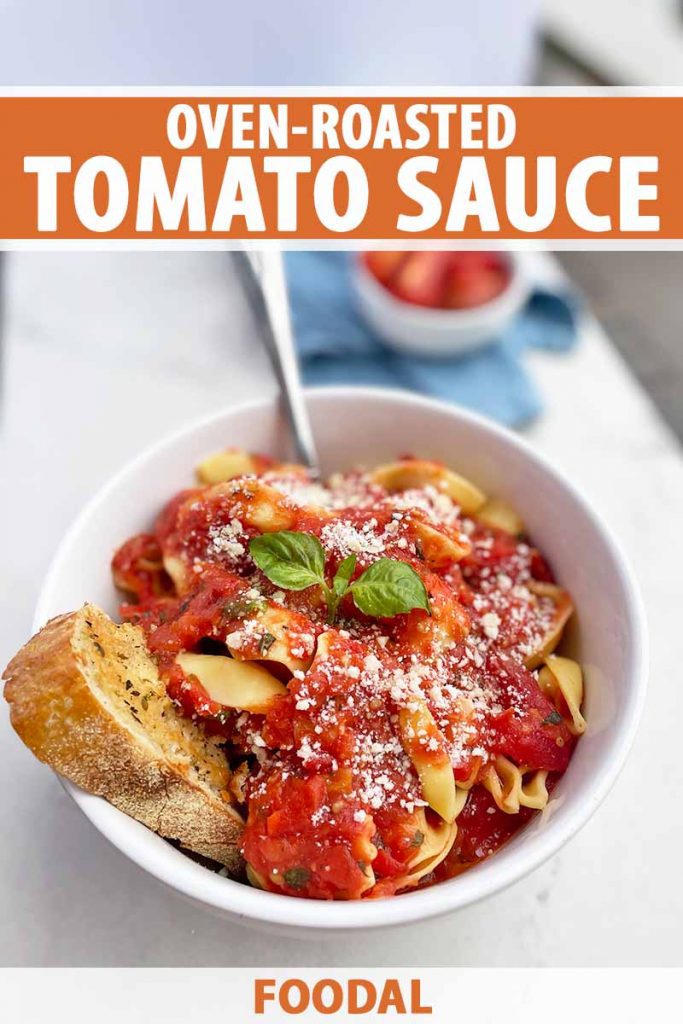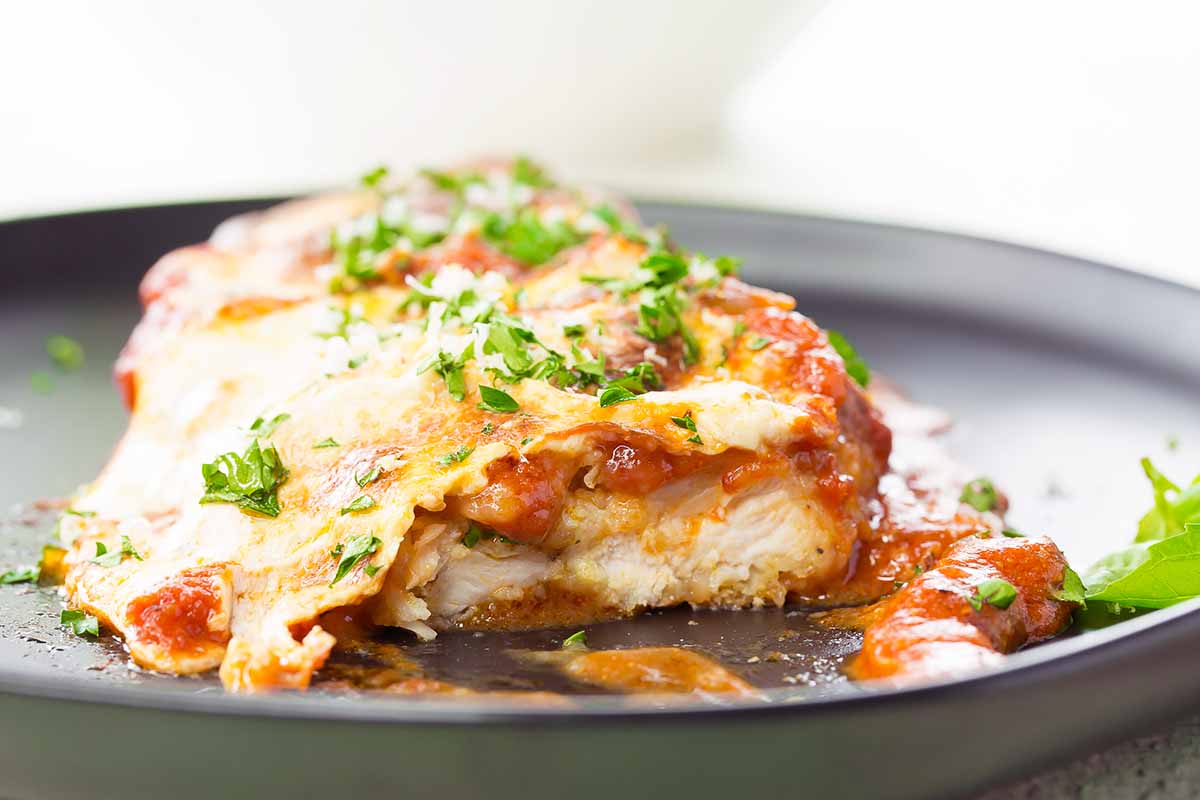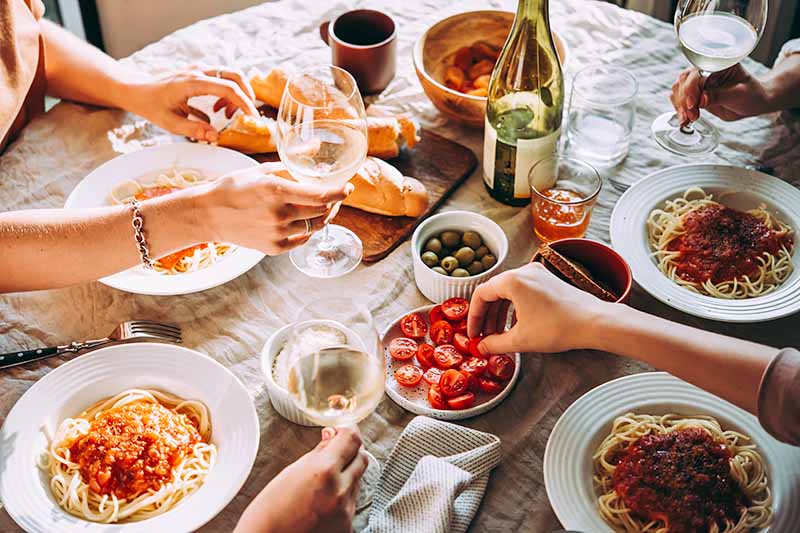Like most things that contain roasted garlic, this modest red sauce is magical.
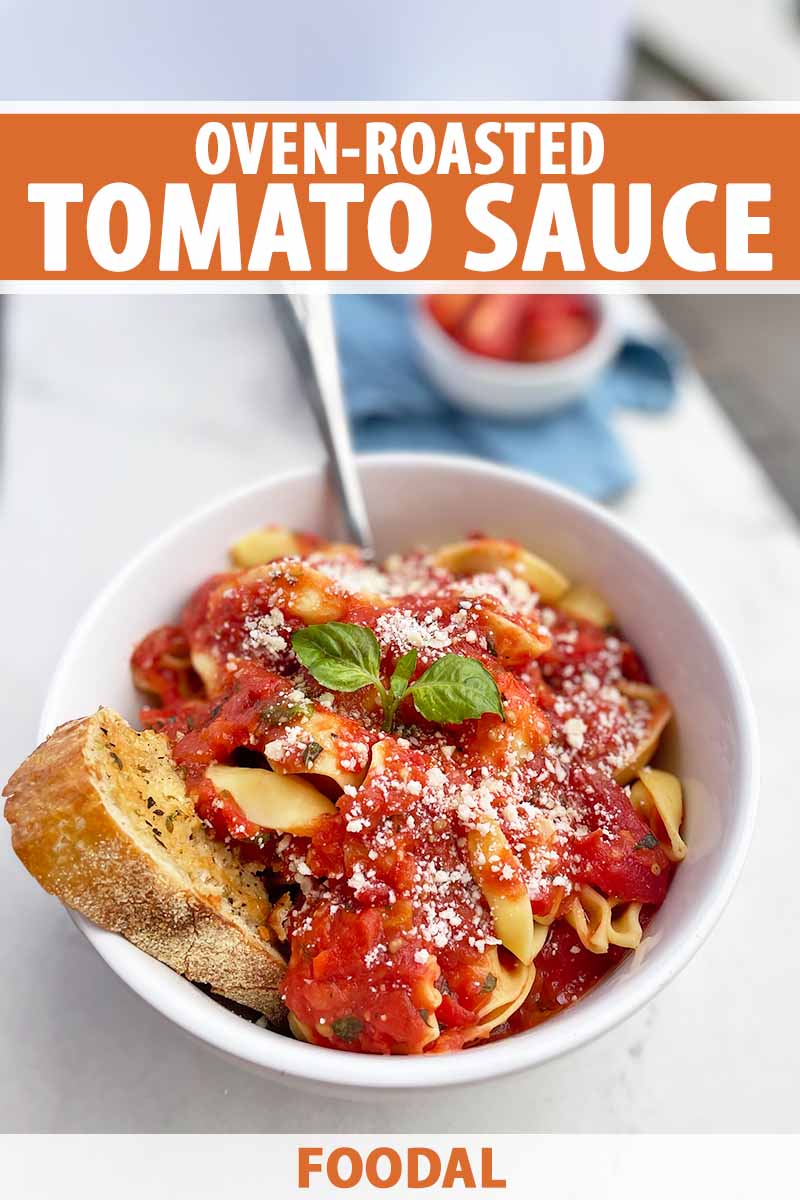
And while the aromatic, golden-brown garlic cloves are a standout in this recipe, it’s the tomatoes that are truly the stars.
Concocting a quick, fresh tomato sauce from scratch has been part of my regular cooking repertoire since I was in my mid-twenties, when I moved across the country to Hollywood, California and lived by myself for the very first time.
The culinary responsibilities were entirely in my hands (since the cat I picked up in Pasadena couldn’t make a grilled cheese to save her life), and I was just beginning to improve my skills and explore eclectic flavor combinations.
Thanks to growing up in a family where everything was homemade, this didn’t even remotely seem like a daunting task. I boldly smeared floral fig jam over savory breakfast sandwiches and mastered the art of naan pizza with a flawlessly crisp crust.
I also became obsessed with oven-roasted tomatoes.
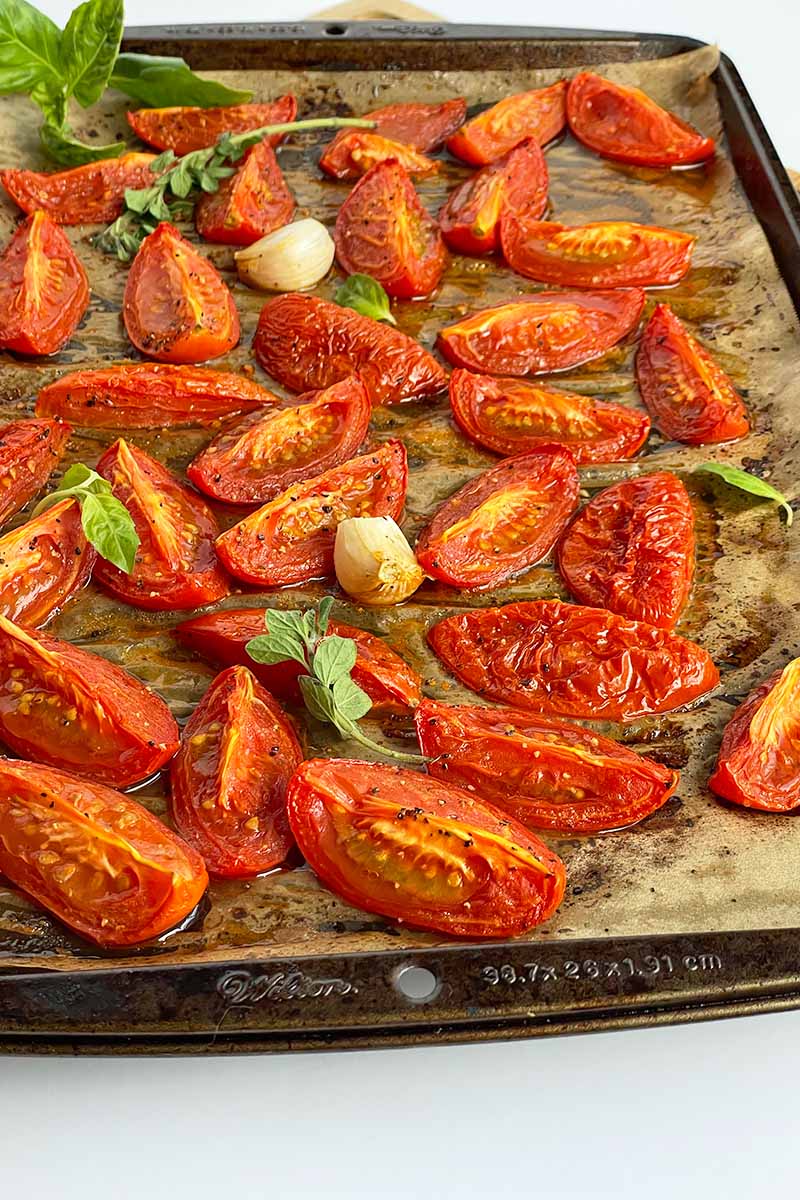
If I got home late and needed a quick but substantial dinner, I would line a sheet pan (or dot a cast iron skillet) with cherry tomatoes and shower them simply in olive oil, salt, and pepper. Under the broiler, they would transform into vibrant charred orbs that would eventually give in and deflate, perfect for serving over angel hair.
A few crumbles (okay, let’s be honest: a heaping handful) of tangy chevre and some sprigs of fresh basil later, and one of my most favorite go-to meals was born.
No matter how many times I made my famous “burst tomato pasta,” the flavors never got old. This oven-roasted masterpiece is a riff on that special recipe that kept me company on many a night in my tiny one-bedroom California apartment.
Cooking tomatoes in the oven to make a robust and flavorful sauce may play second fiddle to simmering them on the stove, but after tasting just one spoonful, you’ll wonder why oven-roasting isn’t your go-to choice every time.
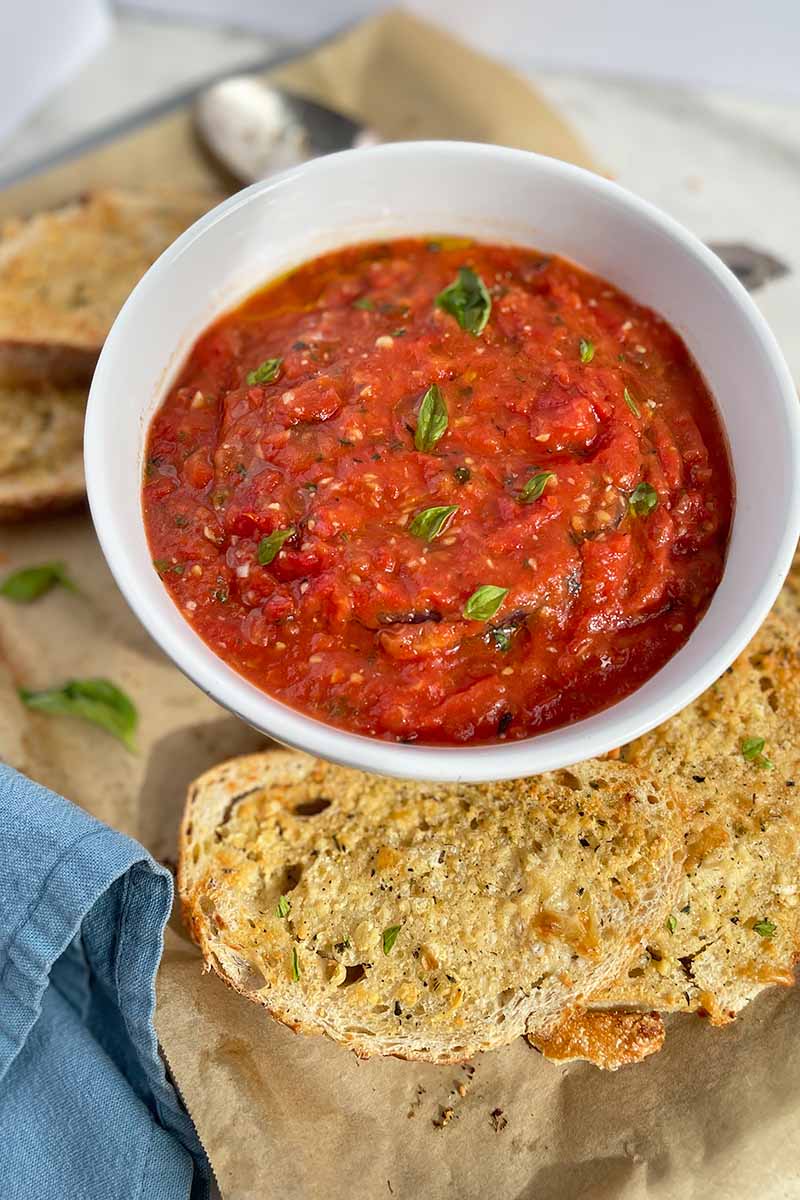
As the skins soften and begin to develop a char, the plump flesh takes on a sweet, concentrated flavor, which a pinch of sugar enhances even more. Cloaked in their protective skins, the garlic caramelizes and loses its sharp, pungent bite.
The cloves of garlic are transformed into mild, aromatic flavor nuggets that I’d readily spread on just about everything, from a cracker to my toothbrush.
I often reach for dried herbs often when making red sauces, so if that’s all you’ve got to work with, don’t fret. Spice rack to the rescue! But if you can get your hands on some fresh basil, the sweet, peppery leaves will add a lovely layer of bright flavor.
You could puree everything together until it’s lusciously smooth, but it’s the slightly chunky, imperfect consistency that gives this sauce its signature look and mouthfeel. I find that a rustic texture also provides a more homemade look.
And if I’ve taken the time to make something from scratch at home, I want it to flaunt itself in exactly that manner!
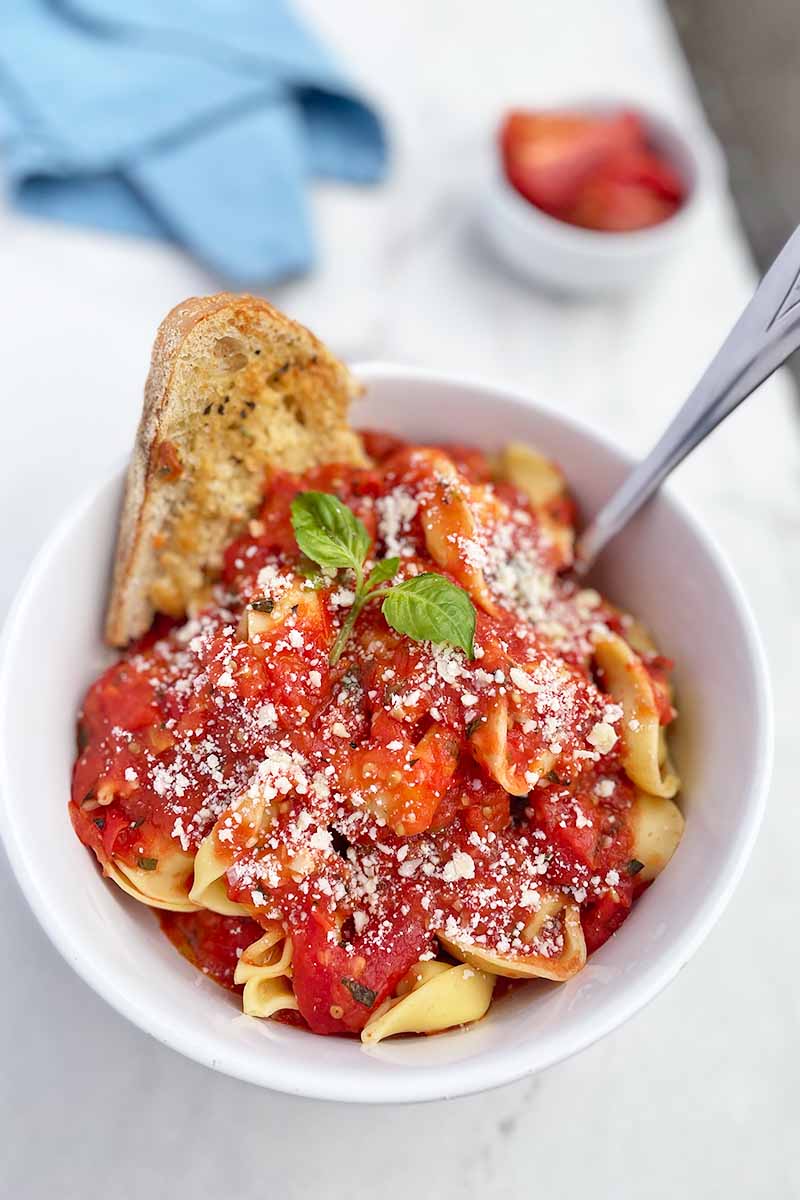
This chunky sauce is a delicious counterpart to crunchy garlic bread, and it is equally divine when served over a bowlful of pillowy pasta, like tortellini.
Other favorite variations include swirling in some half-and-half to create a light and creamy pink sauce, sprinkling in crushed red pepper flakes for a fiery pop, and adding a dusting of hard Italian cheese with a sharp flavor like parmesan, pecorino, or asiago.
If all of the above doesn’t sound like pure enchantment to you, you might want to get your magic wand checked.
Print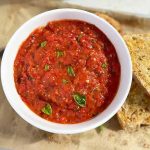
Oven-Roasted Tomato Sauce
- Total Time: 40 minutes
- Yield: Approximately 2 cups 1x
Description
Store-bought marinara’s got nothing on this robust oven-roasted tomato sauce. It’s rich, slightly sweet, and bursting with freshness. Get the recipe now.
Ingredients
- 2 pounds Roma tomatoes (about 8), quartered
- 2 large cloves garlic
- 2 tablespoons olive oil
- 1 teaspoon coarse salt, plus more to taste
- 1/4 teaspoon freshly ground black pepper
- 1/4 teaspoon granulated sugar
- 1 tablespoon chopped fresh basil (or 1 teaspoon dried)
- 1/2 tablespoon chopped fresh oregano (or 1/2 teaspoon dried)
Instructions
- Preheat the oven to 425°F and line a rimmed half-size baking sheet with parchment paper.
- Leave the skins on and snip just the tips off the garlic.
- Arrange the tomatoes and garlic on the parchment paper. Drizzle with the oil and sprinkle with the salt and pepper. Toss to combine.
- Bake until the garlic is light golden-brown and roasted, and the tomatoes begin to soften and lightly caramelize, about 20-25 minutes. Be sure to keep an eye on the garlic, in case it’s done sooner.
- Pinch the ends and slide or squeeze the roasted garlic cloves out of their skins.
- Working in batches so you don’t crowd your food processor, add the tomatoes, roasted garlic, sugar, basil, and oregano. Pulse the mixture until the ingredients start to form a sauce, while retaining a chunky texture.
- Season to taste with additional salt if necessary. Serve over pasta or as a dipping sauce for garlic bread. You can store the sauce in an airtight container in the fridge for 3-5 days or in the freezer for up to 6 months.
- Prep Time: 15 minutes
- Cook Time: 25 minutes
- Category: Sauce
- Method: Stovetop
- Cuisine: Italian
Keywords: tomato, sauce, oven-roasted, italian
Cooking by the Numbers…
Step 1 – Prep the Tomatoes, Garlic, and Herbs
Preheat the oven to 425°F. Line a rimmed half-size baking sheet with parchment paper. You can also use foil or a silicone mat, but I find parchment paper is the best for easy cleanup, and guaranteeing that nothing sticks.
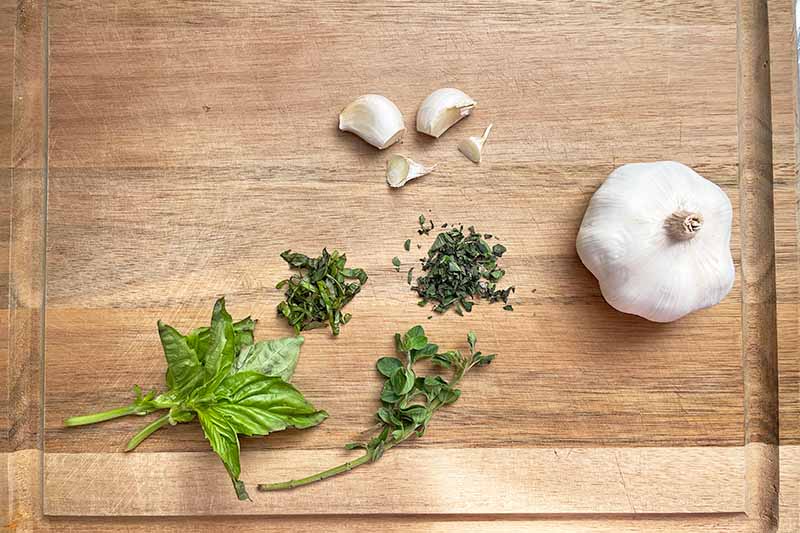
Using a paring knife, slice the tips off the garlic on one end of each clove, but leave the skins on. You can remove some of the papery parts of the exterior, but keeping the cloves in their skin while they’re roasting helps to keep them from burning.
Quarter the tomatoes, and chop the basil and oregano. If you can’t find Romas, substitute another type of plum tomatoes, like San Marzanos.
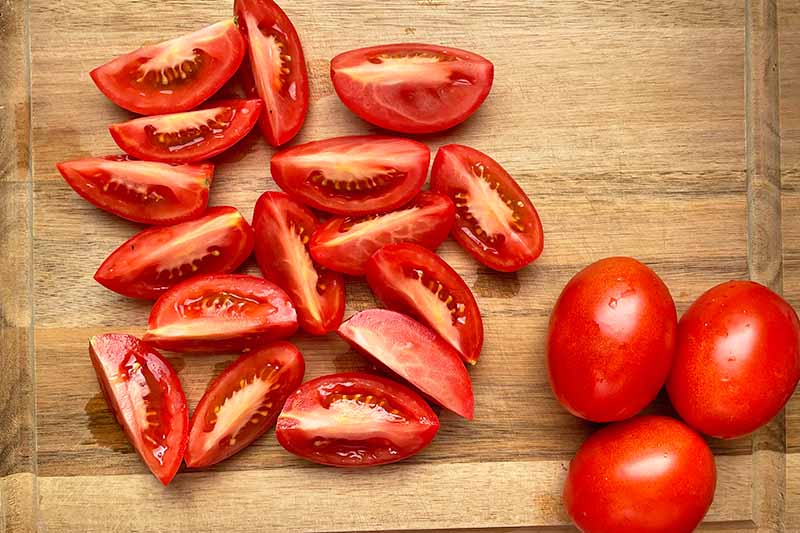
Small vine-ripened tomatoes that come with the vine attached will also work in a pinch, but note that they have a more watery texture. Paste tomatoes like Romas are better for making a sauce.
Step 2 – Roast the Tomatoes and Garlic
Place the tomatoes and garlic on the parchment-lined baking sheet, nestling the garlic somewhere in the middle so it’s not too close to the edges, where things often crisp up faster. Drizzle with the oil, sprinkle with the salt and pepper, and toss to combine.
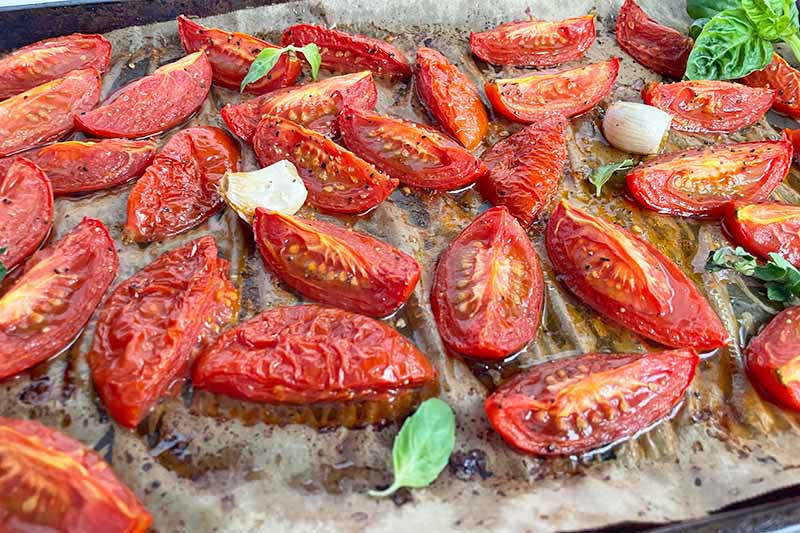
Roast until the tomatoes begin to soften and lightly caramelize and the garlic cloves are golden-brown, keeping in mind that the skins may still be light in color, for about 20 to 25 minutes.
The garlic should be done at the same time as the tomatoes, but keep an eye on things so the cloves don’t burn, and plan to pull them out early if you need to.
Step 3 – Puree
To remove the roasted garlic cloves from the skin, pinch the end that’s still intact and give it a wiggle. It will slide right out of the opening. Place the roasted garlic in your food processor.
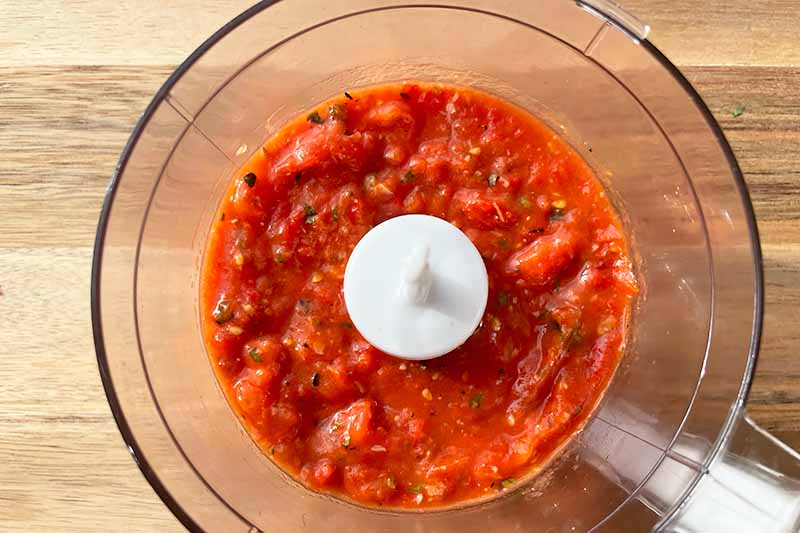
Working in batches if necessary, add the tomatoes, sugar, basil, and oregano to the food processor as well.
For some heat, you could also add a pinch of crushed red pepper flakes. For a thicker consistency and a sharp bite, add 1/4 cup grated parmesan or other variety of hard Italian cheese.
Pulse the mixture just until a cohesive sauce forms. I prefer for it to keep its chunky texture so I don’t lose that rustic look, but you could also continue to blend until it’s smooth if you prefer.
You can use a high-speed blender if you don’t have a food processor. And if you don’t have either, make the roasted garlic into a paste by smashing it with the flat side of a large knife, then mash it with the remaining ingredients in a large bowl with a potato masher.
Step 4 – Taste and Serve
Season to taste with additional salt if necessary. You can also add a bit more sugar if you like a sweeter sauce.
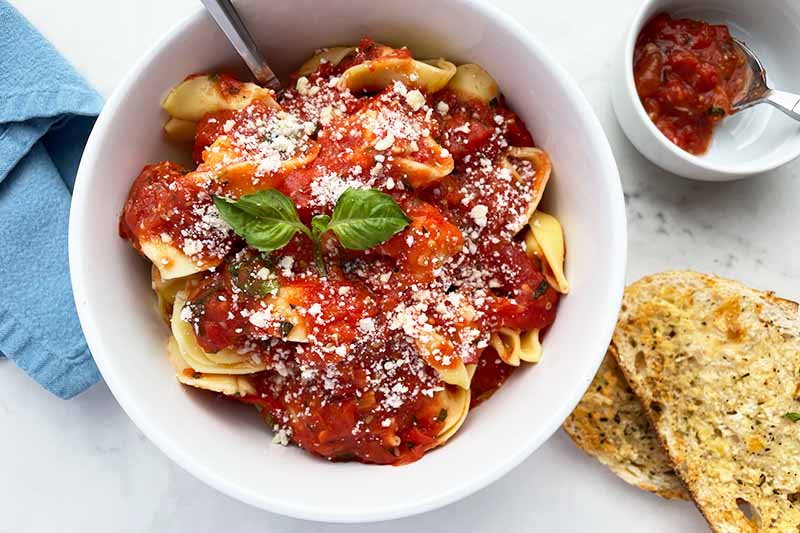
Serve over pasta, like tortellini, or as a dipping sauce with crusty garlic bread.
Store the sauce in an airtight container in the fridge for 3 to 5 days or in the freezer for up to 6 months.
Freezer-proof glass jars are great for freezing this sauce. For stacking and easy thawing, you can portion, flatten, and freeze the sauce in plastic zip-top bags. Check out our guide on preventing freezer burn to make sure your sauce stays safe in there, with the best flavor and texture.
A Rock Star Red Sauce
Between the quick cook time, deep flavor, and versatility of this recipe, it’s sure to become a regular in your weekly lineup of yummy things you may accidentally splatter on your shirt.
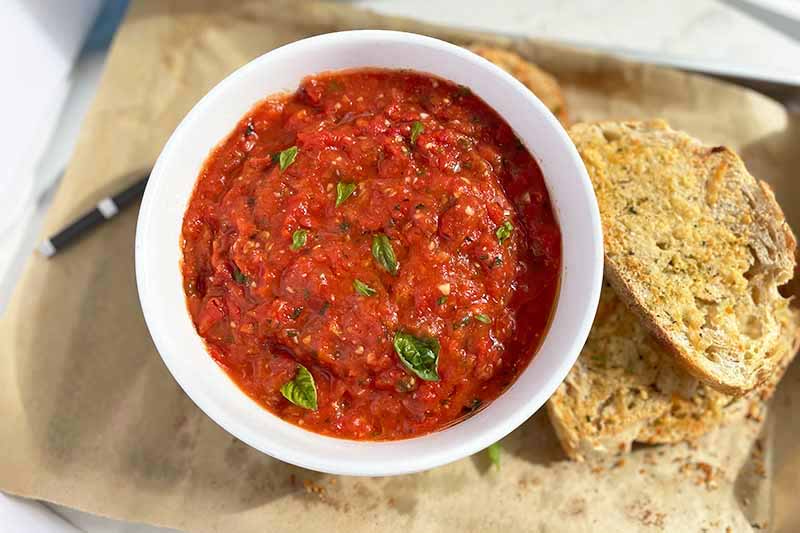
Romas are inexpensive and easy to find, but feel free to give a nod to my West Coast inspiration for this recipe and reach for cherry or grape tomatoes instead, no slicing or other prep work required besides a quick rinse. Oven roasting produces that complex flavor, and a variety of different tomatoes will do. Just be mindful that smaller ones will cook faster.
This recipe usually sends me on a spree of oven-roasting, and I will occasionally add leeks or scallions to the sheet pan – and into the sauce – if I have some stashed in the fridge. A finishing drizzle of extra-virgin olive oil just before serving gives the sauce a glossy look and a touch of fruity flavor.
Will you make this recipe as-is or add another layer of flavor? Share your saucy suggestions in the comments below! And don’t forget to give this recipe a five-star rating if you loved it.
In search of even more sultry sauces? These recipes are a doozy for dressing noods or dipping crunchy carbs:
Photos by Fanny Slater, © Ask the Experts, LLC. ALL RIGHTS RESERVED. See our TOS for more details. Originally published by Sandy Weismann on January 3, 2015. Last updated on February 16, 2022. With additional writing and editing by Allison Sidhu.
Nutritional information derived from a database of known generic and branded foods and ingredients and was not compiled by a registered dietitian or submitted for lab testing. It should be viewed as an approximation.
About Fanny Slater
Fanny Slater is a home-taught food enthusiast based in Wilmington, North Carolina who won the “Rachael Ray Show” Great American Cookbook Competition in 2014, and published her cookbook “Orange, Lavender & Figs” in 2016. Fanny is a food and beverage writer, recipe developer, and social media influencer. She was a co-host on the Food Network series “Kitchen Sink,” was featured on Cooking Channel’s longtime popular series “The Best Thing I Ever Ate,” and continues to appear regularly on the “Rachael Ray Show.”

